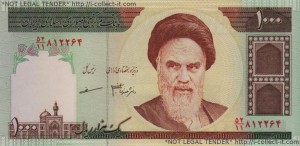 IRAN’S currency plummeted around 17 per cent in trading on Monday, according to media and an online exchange website, severely adding to strains on the Islamic republic’s sanctions-hit economy.
IRAN’S currency plummeted around 17 per cent in trading on Monday, according to media and an online exchange website, severely adding to strains on the Islamic republic’s sanctions-hit economy.
The currency, the rial, weakened to 34,500 to the US dollar by the end of the day’s trading, according to the Mesghal.com website, a drop of 16.6 per cent compared to the previous day’s rate of 29,600.
The Mehr news agency said the rial fell 18 per cent to 35,000.
The rial has lost more than 80 per cent of its value compared with the end of last year, when it was worth 13,000 to the dollar.
Visitors to the money-changing area in central Tehran said registered dealers were no longer selling dollars in their shops, leaving the market to informal traders in the street — a situation resulting in dollars becoming scarce and thus much more expensive.
Iran is suffering heightened geopolitical tensions over its nuclear program and the effects of draconian Western economic sanctions curbing access to its reduced oil exports. It also is burdened with high inflation and rising unemployment.
The rial’s plunge on Monday was largely censored online.
Websites that usually give real-time currency data, such as Mazanex.com, had the dollar rate for the rial blanked out. The Iranian-hosted version of Mesghal (mesghal.ir) disappeared halfway through the day to be replaced with the message “Account Suspended”.
The fall sent a shock through Iranian companies.
“It’s a disaster,” a manager of a business in Iran’s import sector told AFP. “One business lady was really crying, she was losing millions of dollars.”
The Fars news agency said money changers in Tehran were hoarding dollars.
“We do not know what will happen in the coming days, we do not know what the government will do,” it quoted one money changer saying.
The official news agency IRNA quoted a spokesman for Iran’s money changers’ association, Nosrat Ezzati, as saying the latest rates for the rial “are artificial as no real exchange is happening in the market.”
While Western sanctions curbing Iran’s ability to export oil or to make financial transactions abroad were certainly having an impact, blame for the situation was also being put on economic mismanagement.
The government has in recent weeks excluded almost all importers from buying dollars at its official rate of 12,260 rials per dollar, encouraging them instead to use a new “exchange centre” where the rate was fixed daily at a small discount to the open-market rate. That has sharply increased consumer prices and spurred the rial’s fall.
“This centre has helped accelerate the soaring dollar rate,” one economics columnist, Hirad Hatami, told AFP.
But he stressed “there is also the issue of speculation … this is a bubble which is rooted in the operation of the exchange centre.”
news.com.au
Photo: 1000 Rial banknote. In 1979, prior to the takeover of Iran by the Islamist regime of Ayatollah Khomeini, this banknote (n with the picture of the Shah) was worth just over $14 but today it is worth about 2.9 cents or 482 times less.
Leave a Reply
You must be logged in to post a comment.